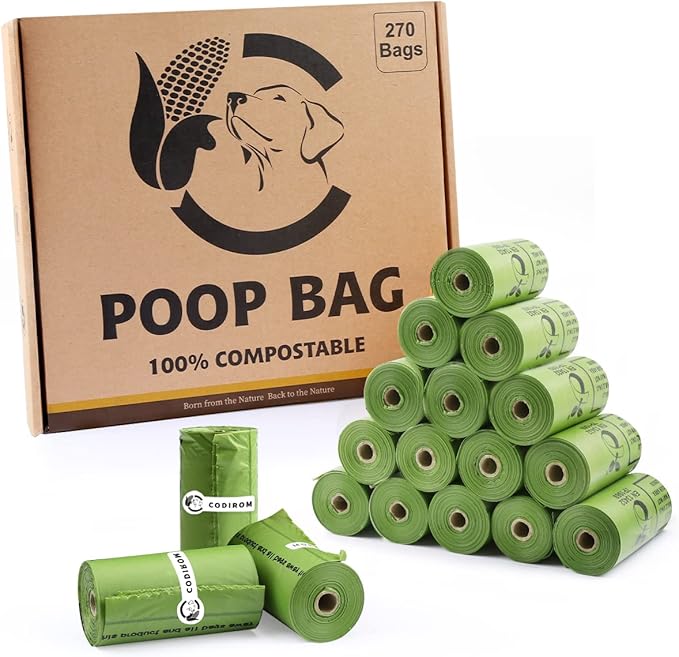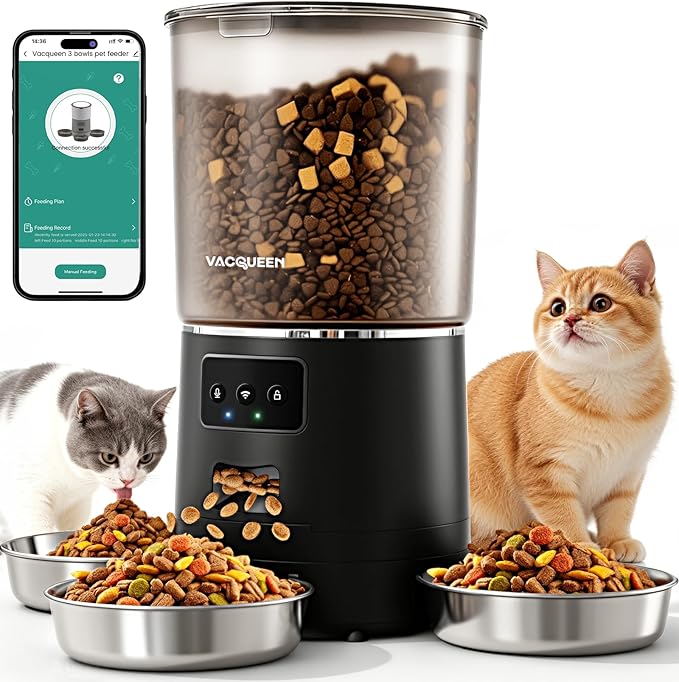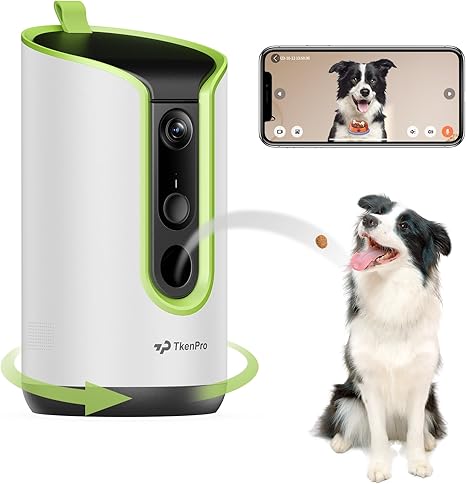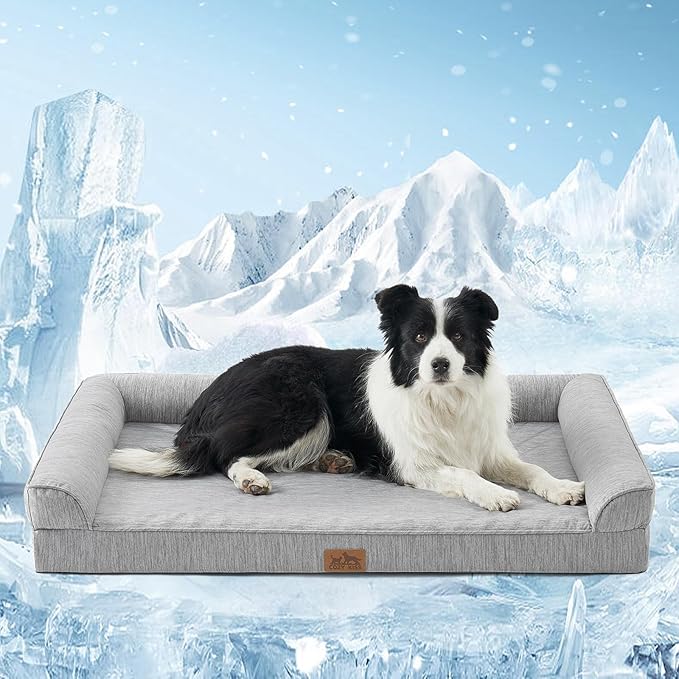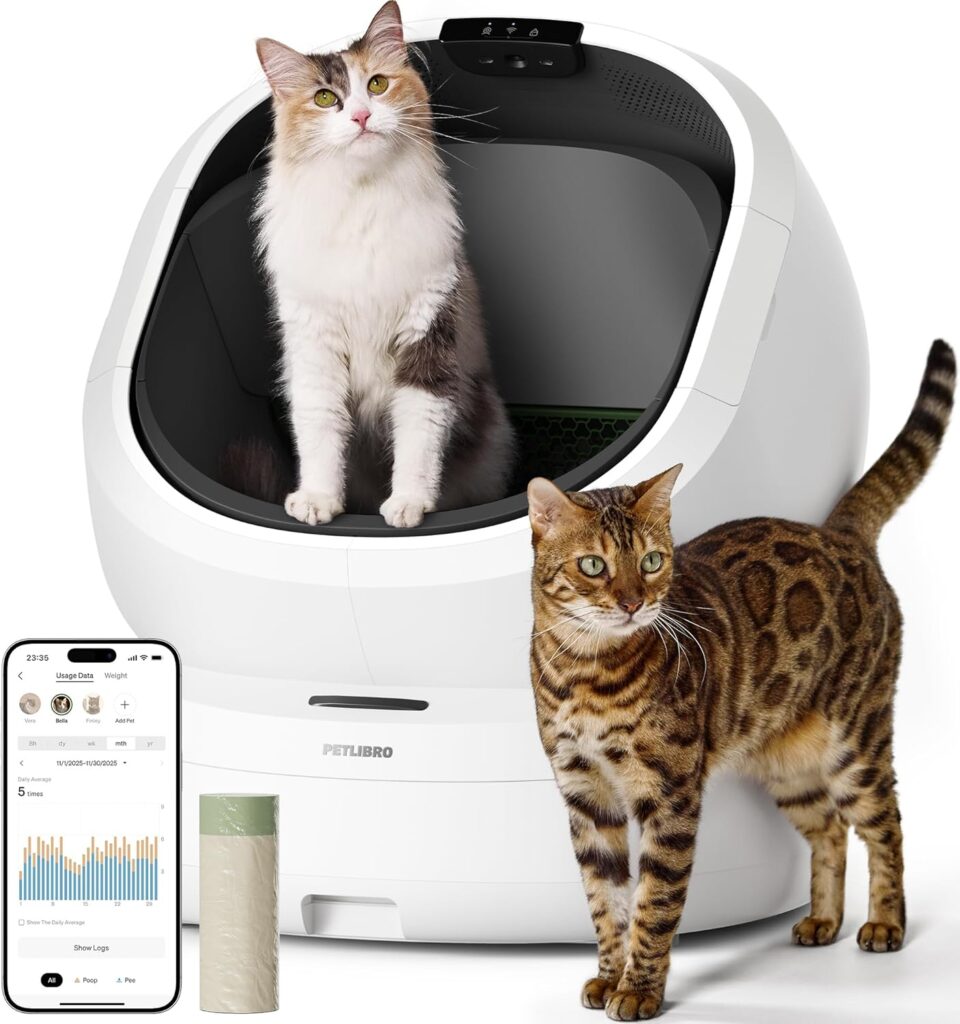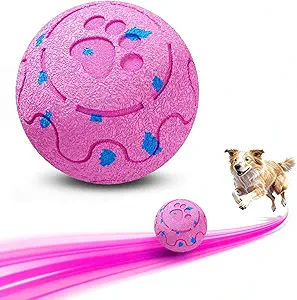Why Bioplastics Are A Better Choice For Pet Waste Bags: A Sustainable Solution for Pet Owners – My Journey to Greener Pet Care
Every day, I face a choice that goes beyond merely picking up after my pet. Although cleaning up pet waste might seem like a trivial hassle, it carries a significant environmental footprint. I first became aware of this impact when I learned how traditional, petroleum-based plastic waste bags were worsening landfill issues and polluting our natural surroundings. That’s when I began to explore the world of bioplastics—a renewable, sustainable alternative that has the power to revolutionize the way we manage pet waste. In this article, I share my personal journey, research insights, and real-world experiments to explain Why Bioplastics Are A Better Choice For Pet Waste Bags: A Sustainable Solution for Pet Owners.
Understanding the Impact: The Environmental Need for Bioplastics
Why Bioplastics Are A Better Choice For Pet Waste Bags: A Sustainable Solution for Pet Owners – Rethinking Conventional Practices
The traditional plastic bags we use are primarily made from non-renewable, petroleum-based substances. Their production and disposal have long-term effects on our environment:
- Centuries to Decompose: Petroleum-based bags can take hundreds of years to break down, contributing to persistent waste in our landfills.
- Severe Pollution: When they finally break down, they fragment and pollute our oceans and landscapes, harming wildlife and marine life alike.
- Heavy Fossil Fuel Dependence: The manufacture of these plastics is intertwined with fossil fuel extraction, increasing carbon emissions and accelerating climate change.
Realizing this, I started questioning the everyday routines that many assume are minor. I knew that switching to bioplastics wasn’t just a convenience—it was a commitment to using renewable resources and moving toward a sustainable, greener economy.
Research shows that in the United States alone, pet waste significantly contributes to the 20 million tons of waste generated annually. This staggering statistic underlines the immediate need for sustainable alternatives in pet care. When we adopt bioplastics, we help reduce our reliance on fossil fuels and encourage manufacturers to invest in eco-friendly technologies.
Environmental Impact Explored: Traditional Plastics vs. Bioplastics
Why Bioplastics Are A Better Choice For Pet Waste Bags: A Sustainable Solution for Pet Owners – Conventional Plastic Drawbacks
Traditional plastic bags might be popular because of their convenience and durability, but they come at an unsustainable cost to the planet:
- Long Decomposition Time: These bags remain in the environment for centuries, continuously harming ecosystems.
- Ocean and Land Contamination: Often washed into waterways, they pose lethal risks to aquatic creatures and contaminate once-pristine habitats.
- Reliance on Fossil Fuels: Their production demands constant use of petrochemicals, further intensifying carbon emissions and environmental degradation.
This realization was the turning point in my pursuit of better waste management for my pet. I started exploring bioplastics, and what I discovered was remarkable. Bioplastics are crafted with nature in mind, addressing the issues that traditional plastics cause while paving the way for a sustainable eco-conscious future.
Bioplastics Demystified: The Eco-Friendly Alternative
Why Bioplastics Are A Better Choice For Pet Waste Bags: A Sustainable Solution for Pet Owners – What Makes Bioplastics Special?
When I discovered bioplastics, I was struck by their innovative composition. Unlike traditional plastics, many bioplastic products are made from renewable resources like cornstarch, sugarcane, and other plant-based materials. This design minimizes reliance on non-renewable fossil fuels and encourages a circular economy, where products complete a full life cycle with minimal environmental impact.
Here are some reasons why the bioplastic alternative works so well:
- Renewable Resource Foundation: By shopping for bioplastic bags, we help decrease fossil fuel dependence while also supporting sustainable agriculture.
- Compostable and Biodegradable: Many bioplastic bags are designed to decompose naturally when disposed of in proper composting conditions, turning into organic matter that enriches the soil instead of clogging landfills.
- Friendly to Wildlife: Since bioplastics break down into non-toxic substances, they substantially reduce risks to animals and ecosystems.
- Minimal Environmental Pollutants: Using bioplastic bags lowers the presence of hard-to-break-down toxins and pollutants, creating a healthier planet for all living creatures.
After testing these products over many months, I’m convinced that the benefits of bioplastics extend far beyond mere functionality—they deliver genuine environmental improvements while maintaining everyday convenience.
The Science of Bioplastic Degradation
Why Bioplastics Are A Better Choice For Pet Waste Bags: A Sustainable Solution for Pet Owners – How They Degrade Naturally
One key advantage of bioplastics is how they break down in the environment. Unlike traditional plastics, bioplastics undergo natural degradation processes that are both beneficial and non-toxic:
- Biodegradation: Microorganisms—like bacteria and fungi—effectively consume bioplastic materials. These organisms convert the plastic into harmless substances such as water, carbon dioxide, and organic compounds.
- Composting: In well-managed composting systems—whether at home or industrial—the bioplastic bags can completely decompose within 90 to 180 days. The ideal conditions include warmth, proper moisture, and vigorous microbial action.
This understanding of bioplastic degradation greatly influenced my decision. I was reassured knowing that when used and disposed of correctly, these products complete their life cycle without leaving behind environmental scars. They transform waste into beneficial soil organic matter, providing a living demonstration of how technology can harmonize with natural processes.
To optimize the degradation process of bioplastics, consider the following tips:
- Maintain a Warm, Moist Environment: Just like a well-tended compost pile, a consistent blend of warmth and moisture accelerates decomposition.
- Promote Microbial Health: Active bacteria and fungi are essential. Avoid contaminating your compost with chemicals that could hinder microbial activity.
- Choose Simple Formulations: Products such as starch-based bioplastics often decompose faster because of their simpler molecular structure.
Remember, even the best bioplastic will underperform in anaerobic landfill conditions. Correct disposal is critical to achieving the desired environmental benefits.
Real-World Testing: My 5-Year-Old Golden Retriever Max’s Experience
Why Bioplastics Are A Better Choice For Pet Waste Bags: A Sustainable Solution for Pet Owners – Testing in the Real World
I put bioplastic waste bags to the test with my spirited 5-year-old Golden Retriever, Max. Known for his boundless energy and enthusiasm during our regular walks, Max became the perfect candidate for evaluating these eco-friendly bags.
We embarked on an extensive three-month outdoor trial, where I carefully observed the bags’ performance under various conditions. Here’s what I found:
- Durability Under Pressure: The bioplastic bags showcased impressive resilience as Max frolicked, proving their capability to handle rough conditions. They remained intact even in strong winds and during sudden jolts, confirming that eco-friendly does not imply less hardy.
- Successful Degradation Post-Use: Upon disposing of the bags in an appropriate compost environment, I witnessed them breaking down naturally. It was a rewarding experience to see waste transform into organic matter that could potentially nourish the soil.
- User-Friendly Design: Initially, I might have been skeptical about their durability, especially during humdrum daily use. Yet, the performance was consistent with traditional bags, eliminating any notion of compromise when switching to a greener option.
Max’s enthusiastic approval reassured me that these bags are not just a concept for the eco-conscious—they work robustly in everyday pet care. His joyful acceptance of the routine reinforced the idea that sustainability and practicality can indeed go hand in hand.
Environmental and Social Benefits of Switching to Bioplastics
Why Bioplastics Are A Better Choice For Pet Waste Bags: A Sustainable Solution for Pet Owners – Broader Impacts on Our World
Embracing bioplastic waste bags has offered benefits that ripple outwards beyond environmental improvement. Here’s how switching to these eco-friendly products sustainably impacts not only individual pet care but also communities and our ecosystem:
- Reduced Carbon Footprint: The production of bioplastics typically requires less energy compared to conventional plastics, resulting in lower greenhouse gas emissions. This is a significant win in the fight against climate change.
- Decreased Landfill Waste: Because bioplastic bags degrade much faster under suitable conditions, they markedly reduce the volume of persistent waste clogging our landfills.
- Wildlife Protection: Bioplastics break down without releasing toxic chemicals, thereby lowering the risk of harm to wildlife that might ingest plastic fragments.
- Boost to the Green Economy: Supporting products made from renewable resources encourages industrial innovation. It also fosters sustainable agricultural practices that benefit local communities and economies.
Every small change in our daily routine contributes to a much larger mosaic. By choosing bioplastics, we champion a cycle that minimizes environmental toxins, promotes recycling of organic matter, and supports a greener, sustainable future for pet waste management.
For more on how these sustainable practices impact pet health and the environment, visit our pet health and environment page.
Pros & Cons: Weighing Bioplastic Pet Waste Bags
Why Bioplastics Are A Better Choice For Pet Waste Bags: A Sustainable Solution for Pet Owners – The Advantages and Limitations
It’s important to consider both the positives and the challenges when making any change. Here’s a straightforward breakdown:
- Pros:
- Made from renewable and sustainable raw materials
- Lower energy requirements and reduced carbon footprint during production
- Designed to be both compostable and biodegradable
- Break down into non-toxic substances that are safe for wildlife
- Support for innovative, eco-friendly technologies and sustainable agricultural practices
- Cons:
- Require suitable disposal conditions—typically a composting environment—for optimal degradation
- May carry a slightly higher initial cost compared to traditional plastic bags
- Performance can depend on specific product formulations and environmental conditions
This balanced view shows that, although some minor adjustments might be needed for proper usage and disposal, the environmental benefits of bioplastic bags make them the clear choice for any eco-conscious pet owner.
Step-by-Step Instructions for Using and Disposing of Bioplastic Bags
Why Bioplastics Are A Better Choice For Pet Waste Bags: A Sustainable Solution for Pet Owners – How to Integrate Them into Daily Use
Integrating bioplastic pet waste bags into your routine is simple. Follow these straightforward steps:
- Step 1: Purchase certified bioplastic bags. Look for certifications such as ASTM D6400 or EN 13432 to ensure they meet recognized compostability standards.
- Step 2: Use the bags just like you would traditional pet waste bags. Ensure they’re securely sealed to prevent accidents or spills.
- Step 3: Collect your pet’s waste with confidence, knowing that each bag is designed to perform under everyday conditions.
- Step 4: Dispose of the bags in a designated composting area—this could be a home compost pile that meets optimal conditions or a certified industrial composting facility.
- Step 5: Regularly monitor your compost setup to make sure it remains conducive to efficient microbial activity and decomposition.
Following these simple instructions not only maximizes the performance of the bioplastic bags but also ensures that their environmental benefits are fully realized.
Safety First: Key Considerations When Transitioning to Bioplastic Pet Waste Bags
Safety First
- Verify that the bioplastic product is certified for compostability and biodegradability.
- Dispose of the bags only in environments that support the proper conditions for decomposition—avoid using them in anaerobic landfill settings.
- Keep your pet’s immediate environment clean by regularly removing waste and cleaning areas to prevent the buildup of harmful bacteria.
- If you’re unsure about a particular product’s safety or its impact on your pet’s health, consult a veterinarian experienced in holistic care.
Common Questions About Bioplastic Pet Waste Bags
Why Bioplastics Are A Better Choice For Pet Waste Bags: A Sustainable Solution for Pet Owners – Debunking Myths
Are bioplastic pet waste bags truly as durable as traditional plastic?
After extensive real-world testing, I found that bioplastic bags can match—and often exceed—the strength of conventional plastic bags, enduring the challenges of regular outdoor use without tearing.
Will these bags break down properly in a normal home compost?
Yes. Provided that your compost environment meets the required conditions of warmth, moisture, and active microbial populations, most bioplastic bags will decompose effectively within 90 to 180 days.
Is the cost difference significant between bioplastic and traditional pet waste bags?
The initial cost of bioplastic bags may be slightly higher, but as demand and production scale increases, the price gap continues to narrow. Given the environmental benefits, this small premium is well justified.
How can I be sure I’m buying a high-quality bioplastic product?
Always look for internationally recognized certifications such as ASTM D6400 or EN 13432 on the product packaging. These certifications guarantee that the product meets strict compostability and biodegradability standards.
Can bioplastic bags be used for all kinds of pet waste management situations?
Yes, modern bioplastic bags are designed to be versatile. They perform reliably in various scenarios, from busy walks with energetic pets to routine home use, as long as they are disposed of correctly.
Expert Insights: Environmental and Health Benefits of Bioplastic Pet Waste Bags
Why Bioplastics Are A Better Choice For Pet Waste Bags: A Sustainable Solution for Pet Owners – The Expertise Behind the Innovation
Drawing on my background in holistic veterinary care and sustainable pet consulting, I recognize that the benefits of bioplastic bags extend significantly to both our environment and animal health. Here’s what my research and experience have taught me:
- Environmental Advantages:
- Lower production energy requirements result in fewer greenhouse gas emissions.
- The use of renewable, plant-based resources helps reduce our dependency on fossil fuels.
- Encouraging a circular economy by utilizing products that fully biodegrade reduces waste accumulation.
- Health Benefits for Pets:
- Reduced exposure to harmful chemicals and toxins that can leach from conventional plastics.
- Minimized risk of accidental ingestion of lingering plastic fragments that could compromise digestive health.
These points highlight that embracing bioplastic alternatives in pet waste management isn’t just about saving the planet—it’s also about protecting the health of our cherished animal companions.
Innovations and the Future of Pet Waste Management
Why Bioplastics Are A Better Choice For Pet Waste Bags: A Sustainable Solution for Pet Owners – Looking Ahead
The field of bioplastics is evolving rapidly, with innovations promising even greater environmental performance and practical benefits. Here are some trends and exciting developments in this space:
- Algae-Based Plastics: Researchers are now experimenting with algae-based materials that not only break down naturally but also capture carbon dioxide during production, offering a dual environmental benefit.
- Improved Durability: Advances in bioplastic formulations are enhancing the strength and reliability of these products, ensuring they perform even better under rigorous pet-waste conditions.
- Economies of Scale: As consumer demand for eco-friendly solutions climbs, larger-scale production of bioplastic products is expected to lower costs, making them accessible to a broader audience.
- Enhanced Features: Developers are exploring integrated design features such as attachable bag dispensers for enhanced convenience during walks, ensuring that sustainability does not come at the cost of practicality.
The future of pet waste management is promising, with ongoing innovations set to transform our everyday practices. By supporting bioplastic technology, we play our part in driving forward these advancements for a healthier planet.
My Personal Transformation: Embracing Sustainable Pet Waste Solutions
Why Bioplastics Are A Better Choice For Pet Waste Bags: A Sustainable Solution for Pet Owners – Reflections from My Own Experience
Switching to bioplastic pet waste bags has become a personally rewarding part of my commitment to sustainable living. I was initially drawn by the need to lower my environmental impact, but over time, the everyday benefits of these products have profoundly changed my perspective.
Every time I take a walk with Max, I think about the small but significant steps we’re taking toward a greener future. Witnessing the degradation process in a well-managed compost pile, knowing that each bag transforms into organic matter rather than persistent waste, fills me with a sense of accomplishment and hope.
This journey is not merely about replacing one product with another—it’s about adopting a lifestyle that prioritizes environmental stewardship and the well-being of all living creatures. For pet parents who care deeply about the legacy we leave behind, choosing bioplastics is a testament to our commitment to a cleaner, healthier world.
Internal Resources: Further Insights into Sustainable Pet Care
Why Bioplastics Are A Better Choice For Pet Waste Bags: A Sustainable Solution for Pet Owners – Expand Your Knowledge
If you’re interested in exploring more about sustainable pet care, I highly recommend diving into additional resources that offer practical advice and deeper insights into eco-friendly living. For instance, check out our dedicated section on pet health and environment where we discuss various methods and products that contribute to healthier lifestyles for both pets and the planet.
FAQs on Bioplastic Pet Waste Bags
How do bioplastic bags compare to traditional plastic in terms of durability?
From extensive testing during daily walks and rigorous outdoor conditions, I found that bioplastic bags perform very well—often matching or even surpassing the durability of conventional plastic bags without compromising on strength.
Will these bags really break down completely in my compost?
Yes, provided your compost environment maintains optimal conditions (warmth, moisture, and active microbial communities), bioplastic bags typically degrade within a period of 90 to 180 days.
Is the environmental benefit worth the extra cost?
Even though there may be a slight premium when buying bioplastic bags, the significant reduction in environmental impact—such as lower greenhouse gas emissions and less persistent waste—more than justifies the extra cost.
How can I be sure that I’m choosing a genuine bioplastic product?
Always check for reputable certifications like ASTM D6400 or EN 13432 on the packaging. These standards confirm that the product is truly compostable and biodegradable, ensuring that your purchase meets quality and environmental benchmarks.
Are there any special disposal requirements for bioplastic bags?
Yes, to achieve effective decomposition, it is crucial to dispose of bioplastic bags in environments that support composting—either a well-managed home compost system or a certified industrial facility.
